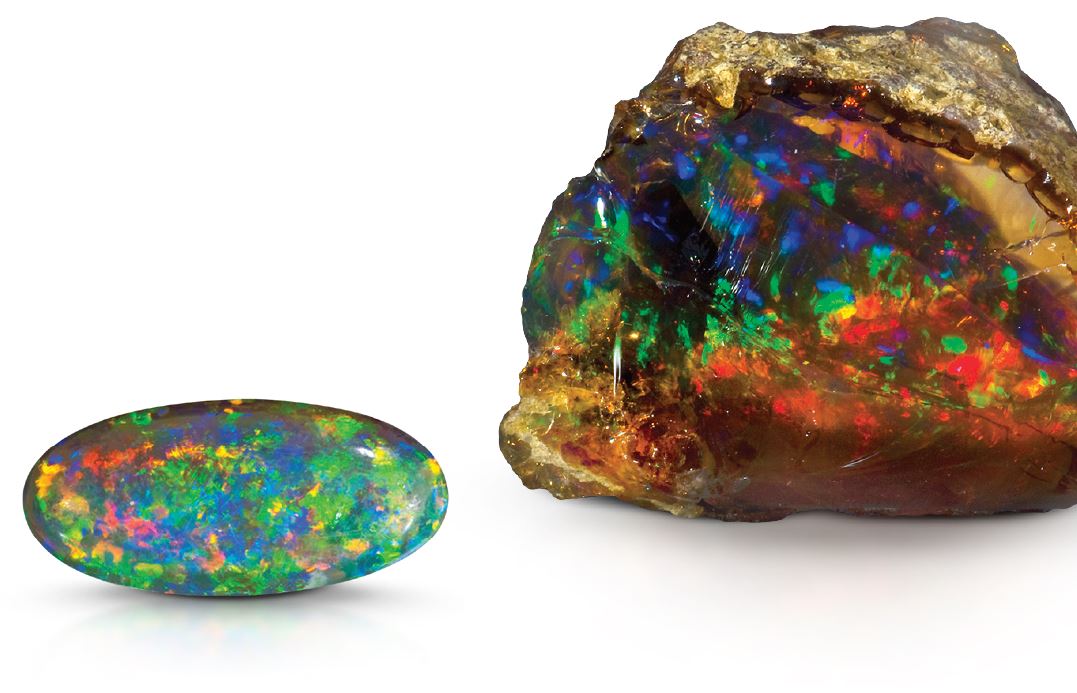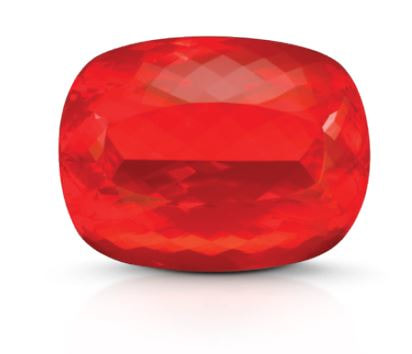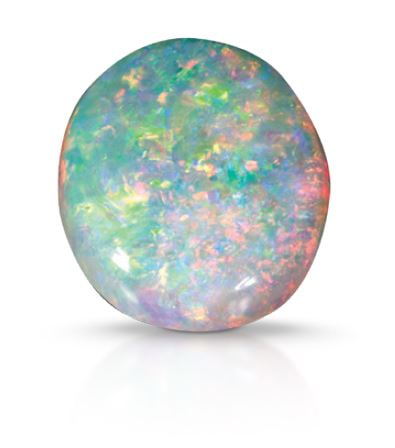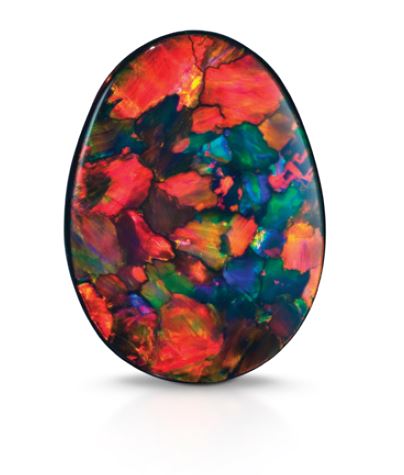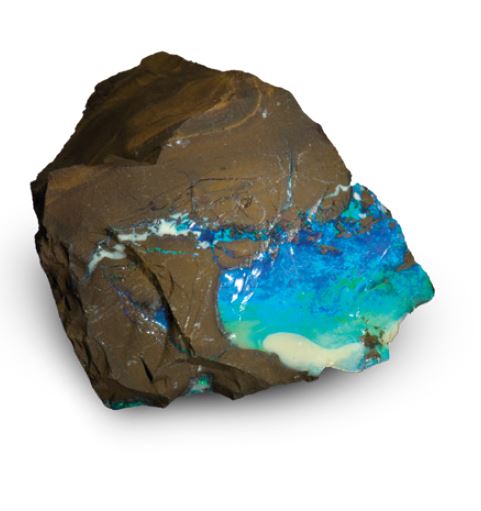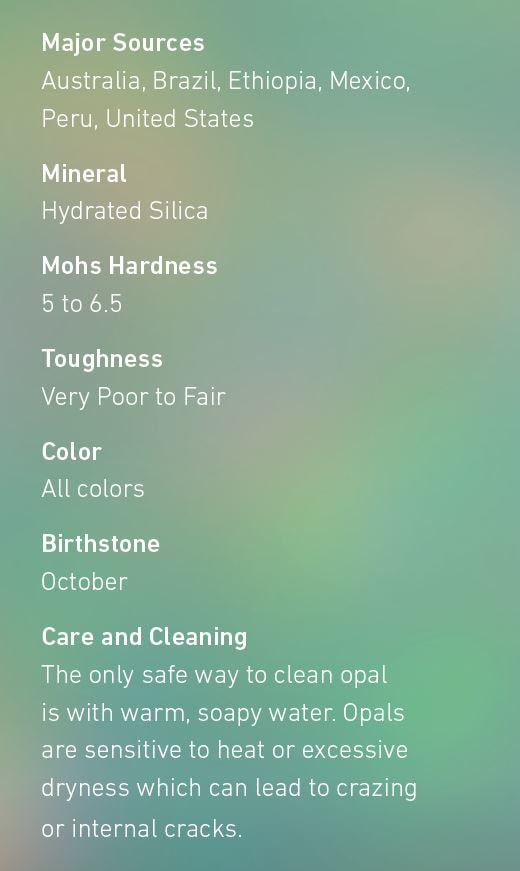OpalAccording to Arabic legend, opal was believed to contain lightning. Writers have compared opal’s color to volcanoes,
galaxies and fireworks. Admirers gave extraordinary opals poetic names like Pandora, Light of the World and Empress. In ancient Rome, this gem symbolized love and hope. The Romans gave it a name—opalus—that was synonymous with “precious stone.” Many cultures have credited opal with supernatural origins and powers. The ancient Greeks believed opals gave their owners the gift of prophecy and guarded them from disease. Europeans have long considered the gem a symbol of hope, purity and truth. Play-of-Color Opals display a phenomenon known as play-of-color.
When a stone has play-of-color, it is referred to as precious opal. The main categories of precious opal are white, black, boulder, and crystal or water. Fire opal, also known as Mexican opal, sometimes doesn’t show play-of-color. Clarity With an opal, clarity is its degree of transparency and
freedom from inclusions. An opal’s clarity can range all the way from completely transparent to opaque. A cloudy or milky background color can sometimes signal a lack of stability. Opals can have fractures and surface blemishes. Matrix, or host rock, along with signs of crazing, a fine network of cracks, have an impact on opal’s durability and value. Source Fine opal comes from all over the world. The most
significant sources are Australia, Mexico and Ethiopia. Treatments Opals can be treated by impregnation with oil, wax or
plastic. Opal doublets or triplets are thin slices of opal glued to a base material and covered with a thin dome of clear quartz. These gems are more resistant to scratching but are considered less valuable. Some opal can be dyed. |
|
All information are courtesy of Gemological Institute of America (GIA). OR DIAMOND are not affiliated with, connected to, or associated with GIA other than selling diamonds and gemstones graded by GIA and have GIA trained staff gemologist and accredited jewelry professional on site.

